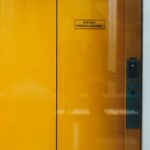Vertical transportation is often described as the backbone of tall and complex buildings. But arriving at the right solution is rarely about picking an elevator from a catalog. Instead, a successful new installation depends on a consultative process that starts well before drawings hit the builder’s desk. At Kaiser Elevator, we live this detail every day, partnering with developers, architects, and specifiers to eliminate guesswork and risk from day one. In this post, let’s walk step-by-step through how vertical transportation consulting—from traffic studies through spec-ready drawings—sets the foundation for code compliance, cost efficiency, and a user experience that holds up for decades.
Why Early Involvement Is Non-Negotiable
Elevators, escalators, and car stackers are major capital investments with implications for floor area, real estate value, energy efficiency, and long-term operations. Engaging us as your vertical transportation consultant early in preconstruction offers a spectrum of critical advantages:
- Right-sizing the System. We analyze population forecasts and building program so your system has the right number, speed, and type of elevators—no more, no fewer. Underestimates lead to longer waits and dissatisfied tenants; oversizing drives up initial and ongoing costs.
- Optimizing Space and Budget. Early planning means we can shape the elevator core, pit, and overhead clearances before design is locked, minimizing redesigns or expensive change orders down the road.
- Assuring Compliance from Day One. We bake in every code requirement—fire ratings, ADA access, machine room ventilation, and communication systems—so nothing is missed when it counts.
- Reducing Schedule Risk. A coordinated, data-driven design process prevents late RFIs, critical path delays, and missed inspection milestones. We address this deeply in our post on code-compliant packages preventing RFIs.

From Data to Insights: Conducting a Robust Traffic Study
Every great vertical transportation design begins with a traffic study. This quantitative backbone tells us how elevators will perform under real usage, ensuring riders are not left waiting during peak hours. We conduct studies in the following structured steps:
- Data Collection. Our team gathers projected headcounts by floor, occupancy types (office, hospitality, residential), shift start/end times, and schedules any special flow periods (such as events or loading).
- System Modeling. With those numbers, we use proven models to project round-trip times, average wait intervals, and holding capacity. These simulations guide every major decision, from car speed to zoning configuration.
- Zoning and Bank Strategy. For high- and super high-rise projects, we design logical elevator banks (low, mid, high-rise groups) to distribute traffic, minimize stops, and keep average waits under strict targets.
- Transparent Reporting. All results are documented with clear tables and diagrams, so owners and architects can see exactly why the recommended configuration wins on both benchmarks and code compliance.
This detailed approach is especially critical in dense urban markets like New York City, where high-rise mixed-use and commercial occupancy cycles demand rigorous traffic planning. For a deeper dive, our guide on preconstruction elevator essentials covers the topic step-by-step.
Coordinating the Core: Layout and Early Drawing Review
Armed with traffic study insights, we get to work tailoring the elevator core. This means integrating shaft locations, dimensions, and machinery needs directly into building plans. Our process includes:
- Shaft Sizing and Placement. We recommend minimum and preferred shaft clearances tailored to your elevator type and car capacity, preventing conflicts with structural columns and reducing encroachment into usable floor area.
- Pit and Overhead Coordination. Detailed section drawings specify pit depth and overhead to avoid clashes with HVAC, fire protection, and other trades. Proper planning prevents construction rework, which can upend project timelines.
- Lobby and Circulation Optimization. ADA guidelines and egress requirements are incorporated so passenger flow is smooth and safe at every floor. We review and mark up plans to illustrate how elevator placements will affect hallway and lobby sizes.
- MEP and Structural Integration. We loop in base building engineers for load calculations and power riser planning, avoiding surprise electrical upgrades later.

Spec-Ready Drawings: Clarity Before Construction
Once the layout is settled, we prepare the package of drawings and technical specifications that will guide bidding, fabrication, and build. Our spec-ready set includes:
- Plan and Section Diagrams. Fully dimensioned layouts for hoistways, car sizes, landings, machine rooms (if applicable), and rescue access points. These documents remove ambiguity, letting bidders respond accurately and keeping the job on budget.
- Performance Specifications. We write three-part specs with all code references, minimum ride quality, control system functions, ADA and safety needs (emergency stops, backup power, fire-rated doors), and sustainability targets (energy efficiency, material standards).
- MEP and Life Safety Notes. We coordinate with consultants and vendors to lock down switchgear locations, feeder requirements, HVAC needs, and fire alarm tie-ins.
- Compliance Checklists. Each drawing set lists all required local and national regulatory codes, such as ASME A17.1 for elevators, NYC DOB guidelines, seismic design for specific geographies, and communication systems for emergency response.
This early clarity protects against scope gaps that drive claims or scope-creep, and keeps inspection and closeout frictionless for everyone involved.
Bid, Award, and Construction Support
With spec-ready documents, the project team can run an apples-to-apples bidding process. Kaiser Elevator is uniquely positioned with:
- Vendor and Submittal Review. We vet proposals from elevator OEMs and suppliers, ensuring they adhere to design intent and qualifying only those who can meet required standards.
- Shop Drawing Coordination. As shop drawings and finish samples come in, we review every item for conformance, flagging discrepancies before anything is manufactured or ordered that might cause costly change orders or disappointment in installed finish.
- Jobsite Meetings and Issue Resolution. We actively participate in construction meetings, helping resolve field questions on the spot and coordinating sequence with structure and MEP trades for a frictionless install.
- Turnover and Compliance Confirmation. At project completion, we walk the job with the project team, reviewing all elevator components, controls, and safety devices, checking for code compliance and ADA functionality ahead of final certificate of occupancy or open of business.
What Makes Us Different: Kaiser Elevator’s Approach
Our approach stands out not just for technical expertise, but for partnership throughout the process. We are with you from the first sketch to the first elevator ride, bringing:
- Experienced Engineering. Kaiser Elevator’s team includes engineers and architects with deep familiarity in both code and constructability. We know how to value-engineer solutions without compromising safety or performance.
- End-to-End Lifecycle Support. Our responsibilities do not end at handover. We offer regular maintenance, modernization, and training for building staff, ensuring your vertical transportation always works as designed and lasts for decades. Learn more about our maintenance approach by reading our service solutions overview.
- Custom Design for Every Asset Type. Whether it’s a high-rise office, a residential landmark, a hospital, a school, or an urban parking development needing car stackers, we don’t force fit solutions. We build for your needs—always up to code and never over-specified.
- Full Transparency. From cost breakdowns to design reasoning, we keep every stakeholder informed at each phase, minimizing surprises and helping you deliver on time and on budget. For more on reducing installation risk and surprise costs, review our insights on elevator installation cost control.
Elevate Your Next Project With Data and Design Expertise
Working with a vertical transportation consultant—especially one that understands the local codes, inspection regimes, and complex design needs of buildings in bustling regions—can be the difference between a smooth project and a costly lesson.
If you’d like to explore an informed and practical approach to elevator design and installation, or want a review of your current schematic or bid set, connect with us for a conversation. Kaiser Elevator is rooted in engineering excellence and anchored by full-lifecycle support. With us, you skip the finger-pointing and focus on what matters most: a building that works exactly as designed, from the ground floor to the penthouse.
Start your project off on the right foot—visit kaiserelevator.com or call us at +1 (888) 274 6025. Let’s talk vertical transportation consulting that delivers on every front.

